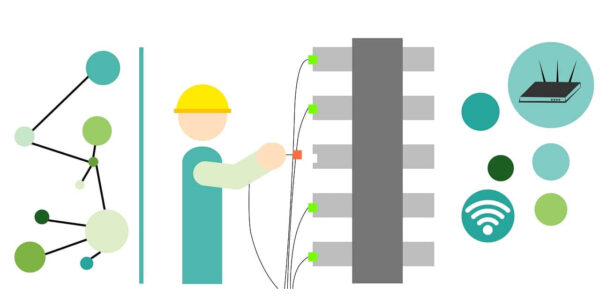✅ Last checked on
In today’s digital age, a robust home network architecture is the backbone of modern living. From streaming your favorite shows and working remotely to connecting smart devices, a reliable home network is crucial.
In this guide, we delve deep into Home Network Architecture Explained: A Guide, shedding light on essential components, tips for optimization, and answers to frequently asked questions.
Home Network Architecture Explained: A Guide

When it comes to setting up a seamless and efficient home network, understanding the architecture is essential. Let’s dive into the different aspects of home network architecture to ensure you have a comprehensive understanding.
The Core Components
At the heart of every home network are the core components that facilitate data transmission and connectivity. These components include:
- Modem: The modem connects your home network to your Internet Service Provider (ISP) and converts digital signals to analog signals for communication over the network.
- router: The router directs data traffic between devices within your network and manages incoming and outgoing data flow.
- switch: A switch enables multiple devices to connect within a local area network (LAN), allowing them to communicate with each other efficiently.
- Access Points: Access points extend the range of your wireless network, ensuring strong and consistent Wi-Fi coverage throughout your home.
Network Topologies
Home networks can be structured using various topologies, including:
- Star Topology: In this common setup, devices connect to a central hub (the router). It’s easy to set up and troubleshoot, making it ideal for most households.
- Mesh Topology: A mesh network consists of multiple access points placed strategically throughout your home, creating a seamless and robust Wi-Fi coverage, perfect for larger spaces.
- Ring Topology: Devices are connected in a circular manner, with each device connected to two others. While less common, it offers redundancy in case of a connection failure.
Wired vs. Wireless Connections
Deciding between wired and wireless connections depends on your needs:
- Wired Connections: Ethernet cables provide stable and fast connections, making them ideal for stationary devices like desktop computers and gaming consoles.
- Wireless Connections: Wi-Fi offers convenience and mobility, connecting devices like smartphones, laptops, and tablets. Place access points strategically for optimal coverage.
Securing Your Network
Ensuring the security of your home network is paramount. Follow these steps:
- Change Default Passwords: Modify default passwords on your router and devices to prevent unauthorized access.
- Enable Encryption: Use WPA3 encryption for Wi-Fi passwords, enhancing security.
- Firewall Protection: Enable the firewall on your router to block malicious incoming data.
- Regular Updates: Keep your router’s firmware updated to patch security vulnerabilities.
FAQs about Home Network Architecture
How many devices can my home network support?
The capacity varies depending on your router, but modern routers can typically handle around 25 to 50 devices.
Can I upgrade my network’s speed?
Yes, upgrading your Internet plan or investing in a higher-speed router can improve network speed.
What’s the benefit of a mesh network?
Mesh networks offer broader coverage and better performance in larger homes, eliminating dead spots.
How do I troubleshoot network connectivity issues?
Start by rebooting your modem and router. If issues persist, check for firmware updates and scan for malware.
Can I prioritize certain devices on my network?
Yes, Quality of Service (QoS) settings on routers allow you to prioritize specific devices or applications for better performance.
Should I use a separate network for smart devices?
Creating a separate guest network for smart devices can enhance security and prevent unauthorized access to your main network.
Conclusion
In conclusion, understanding the intricacies of Home Network Architecture Explained: A Guide is essential for creating a seamless and efficient network within your home. By comprehending the core components, choosing the right topology, securing your network, and addressing common concerns, you can optimize your home network for a connected and enjoyable digital experience.
If you’re looking to set up or improve your home network, this guide provides the insights and knowledge you need. Embrace the world of connectivity with a well-structured home network architecture.